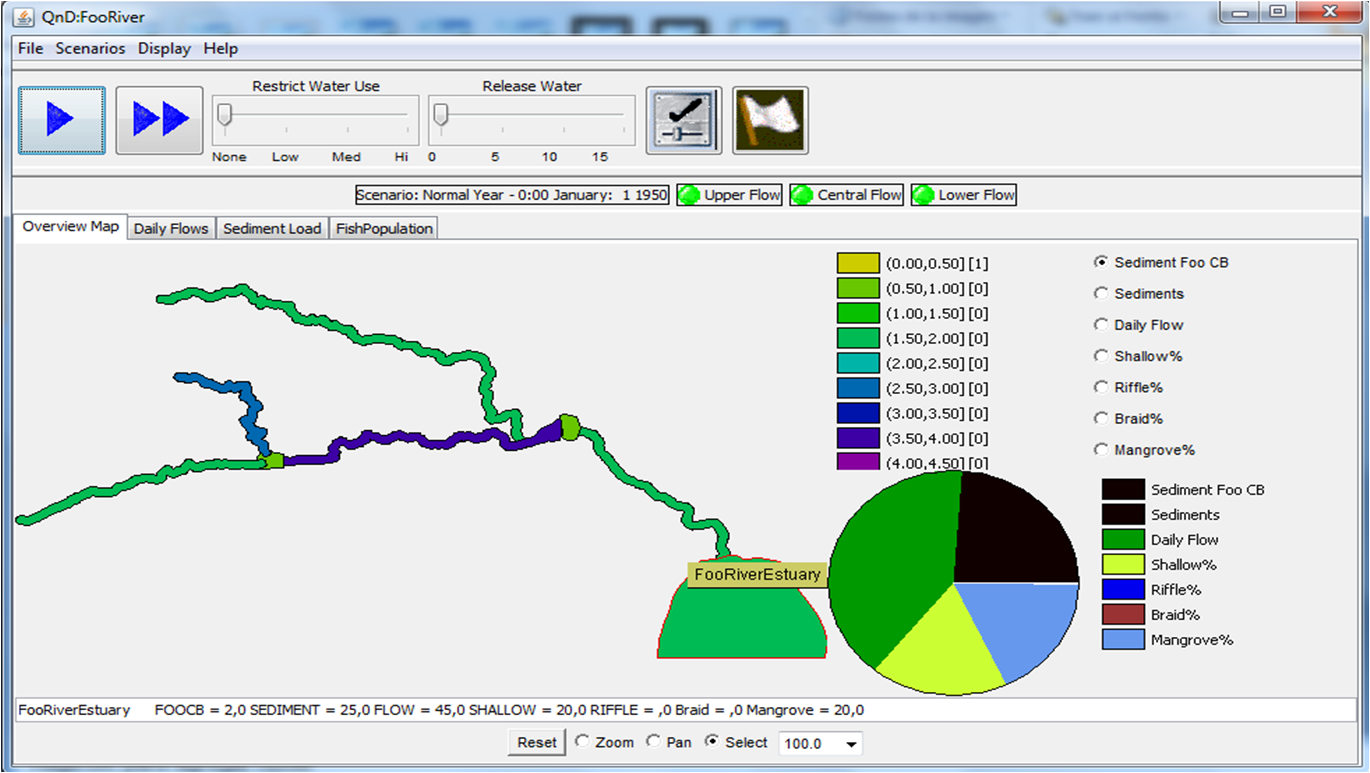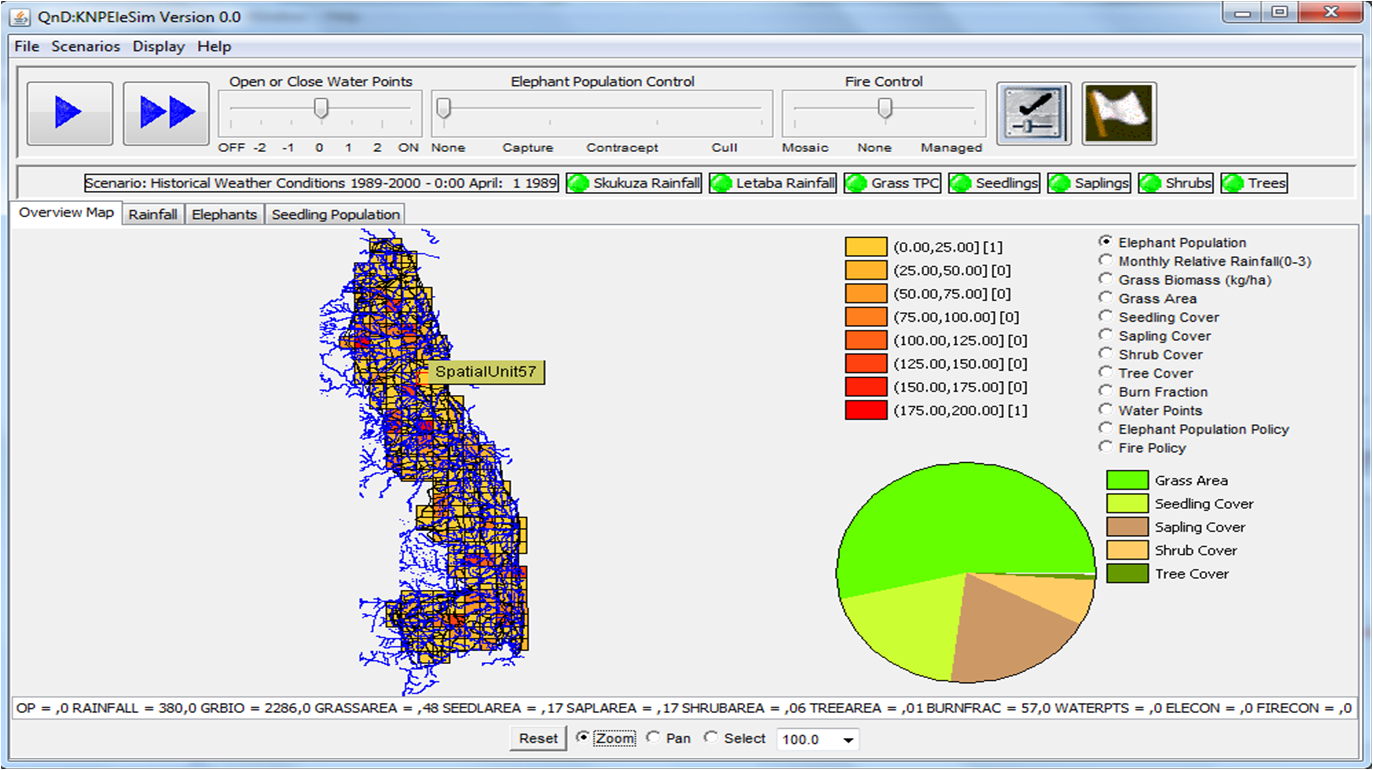QnD: KNP – Elephant/Vegetation dynamics in the Kruger National Park, South Africa
The Kruger National Park (KNP) is located in the northeast corner of South Africa. The tree-grass coexistence in the African savanna biome is of much importance and its preservation is a goal of most conservation authorities. However, there are major concerns in these areas as higher levels of elephant densities could lead to repression of biodiversity which would lead to reduction of levels of specific woody trees and a decrease overall patch density signaling an increase in homogeneity of ecosystems. The major forces acting upon this coexistence are elephant herbivory, water, nutrients, and stochastic environmental variables such as fire and rainfall.
Thus, a grid-based model of the KNP was created, and also formulate a scenario-based simulation to track and predict the progression of these ecological systems. The aim was to help improve the management and monitoring of savanna biodiversity levels, especially that of tree-grass coexistence, in reference to stochastic variables like fire and rainfall, and, most importantly, elephant grazing and browsing. KNP environmental data will be incorporated into the KNP effort including (inter alia) rainfall, elephant densities, woody tree/grass populations, rainfall totals, soil composition and fire occurrence. Thus, the modeling effort provided a visual analysis of the interrelationships between selected biotic and abiotic factors in the Kruger National Park.
Management options within the KNP included:
1. Fire Management – via management fires or fire suppression
2. Elephant Population Management – via capture/off-site removal or culling
3. Surface Water Management – via opening or closing permanent water points (bore holes)
QnD: FooRiver – Integrating sediment and ecosystem management for minimizing risk
A riverine ecosystem/dredging/risk version of QnD was developed as a demonstration project for the US Army Corps of Engineers – Engineer Research and Development Center to show how QnD can be used in a stakeholder setting with problem definition, model design and scenario generation.
Stakeholders in the FooRiver basin have environmental challenges that center around the dredging and disposal of contaminated sediments. FooCB (a fictitious non-metabolized organic, similar to PCBs and Dioxins) is present in river sediments at varying concentrations throughout the FooRiver system. Significant trophic transfer of FooCB can occur from sediments, through benthic invertebrates and into fish populations. These fish populations are consumed by local recreational anglers.
The primary management options of interest to FooRiver stakeholders are dredging within the river reaches and disposal of the contaminated dredged material. Economic and social concerns are also important for stakeholders in that management budgets are limited and some management choices are more popular than others. In addition, stakeholders have questions about management responses under different climate scenarios including the southern oscillation index (“El Nino”, Neutral/Normal, “La Nina”) which tend to have different flow and sediment fluxes.


